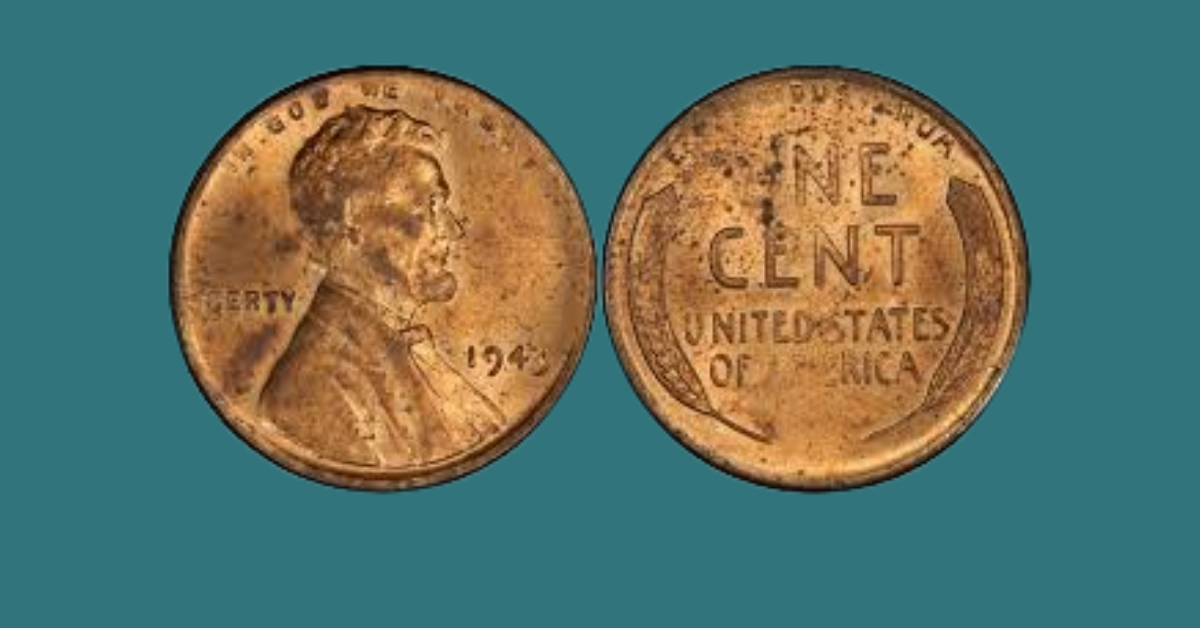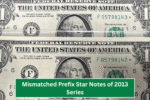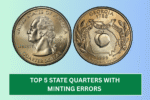In the world of coin collecting, rarity and uniqueness often trump face value. While most coins are perfectly produced, a small number emerge from the minting process with unintended mistakes—known as error coins. These anomalies, caused by technical glitches, human error, or mechanical malfunctions, can transform an otherwise ordinary coin into a highly sought-after collector’s item.
Error coins have fascinated collectors for decades, partly because they offer a glimpse into the complexities of mass coin production, and partly because they can be worth exponentially more than their face value—sometimes even millions of dollars. Here are five of the most valuable error coins ever minted in the United States and what makes them so prized.
1. 1955 Doubled Die Lincoln Cent
One of the most famous error coins in American history, the 1955 Doubled Die Lincoln Cent is a textbook example of a doubling error during minting. Doubling occurs when the coin die—the tool used to strike the design into a blank coin—is misaligned during its creation. As a result, the imagery or inscriptions appear doubled.
In the case of the 1955 penny, the error is most visible in the lettering “LIBERTY” and “IN GOD WE TRUST,” as well as in the date itself. The doubling on this cent is so pronounced that it’s visible with the naked eye, making it an easy target for casual identification.
A regular 1955 cent is worth only face value unless in pristine condition, but a 1955 Doubled Die can fetch thousands of dollars. In circulated condition, they often sell for $1,000 to $1,800. In uncirculated examples, they can command more than $15,000.
2. 2004 Wisconsin Extra Leaf Quarter
This quirky error coin became headline news shortly after entering circulation. In late 2004 and early 2005, collectors began noticing that the Wisconsin state quarter had an unexpected feature on the reverse—an extra leaf on the corn stalk next to the cow and wheel of cheese featured in the design.
There are actually two variations of this error: the “Extra Leaf Low” and “Extra Leaf High.” Theories abound about how the extra leaf got there, with some speculating that it may have even been intentional. Regardless of the origin, the public was intrigued and demand skyrocketed.
Uncirculated examples of the Extra Leaf quarters have sold for over $1,500, while even circulated examples commonly sell for $200 to $300. Their relatively recent discovery adds to their appeal, showing that valuable coins can still be lurking in pocket change.
3. 1943 Copper Lincoln Cent
During World War II, the U.S. Mint switched from copper to zinc-coated steel for pennies to conserve copper for the war effort. However, a small number of copper blanks—used prior to the change—were inadvertently struck with the 1943 date. Only about 20 are known to exist.
The 1943 Copper Lincoln Cent is considered one of the Holy Grails of error coin collecting. While the average 1943 steel cent is worth a few cents to a few dollars, the copper version is worth a fortune. One sold at auction in 2010 for $1.7 million.
Authentication is key here. Because many steel cents have been copper-plated to resemble the rare error, collectors need to be cautious and seek expert verification when acquiring or appraising a suspected 1943 copper cent.
4. 2007 Presidential Dollar Missing Edge Lettering
When the Presidential $1 Coin Program launched in 2007, the U.S. Mint introduced edge lettering on the coins for the first time in modern history. The edges were supposed to include the year, mint mark, and the mottos “E Pluribus Unum” and “In God We Trust.” But errors soon surfaced.
Thousands of George Washington dollar coins were released without these inscriptions on the edges—a glaring oversight due to a skipped production step. Dubbed “Godless dollars” by the media, these coins became an instant collector sensation.
Although initially fetching as much as $600, the rush of new discoveries has brought prices down somewhat. Today, the coins typically trade for $50 to $150 depending on condition and mintage location. Still, they remain a reminder of how modern technology can’t always prevent human errors.
5. 1982 No Mint Mark Roosevelt Dime
All U.S. coins bear mint marks—small letters indicating where the coin was struck (e.g., “D” for Denver, “P” for Philadelphia, “S” for San Francisco). However, in 1982, thousands of dimes were released without their identifying mint mark, most notably from the Philadelphia Mint.
This was significant because Philadelphia coins had only begun carrying mint marks in 1980. The 1982 No Mint Mark dime originated from a die that had been improperly prepared without the “P” stamp.
The error went largely unnoticed when the coins were first released, but by the late 1980s, numismatists began looking for them. In high-grade condition, these coins can sell for up to $300 or more—small change for some, but a hefty sum compared to their 10-cent face value.
Keep an Eye on Your Change
Error coins serve as tangible reminders that even in highly regulated government operations, mistakes happen—and sometimes, those mistakes are worth big money. Whether it’s a doubled image, a missing mint mark, or unintended elements in the design, these anomalies are often more than quirks; they’re gateways into the rich history of American minting.
Collectors should always be aware of the potential treasures hiding in everyday change. While these five coins are among the most famous and valuable, countless lesser-known errors also exist. All it takes is a keen eye and a bit of knowledge to turn a regular transaction into a potential windfall.
So the next time you’re sorting through coins, take a closer look. You might just find a surprising piece of minting history—and make some money along the way.



